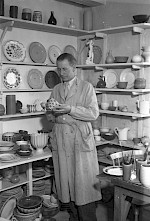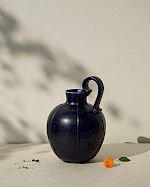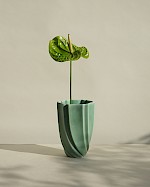Born in Vickleby in Vickleby (Sweden) Carl Arthur Percy Carlsson (1886–1976), later Arthur Percy, was was one of Sweden’s leading ceramic artists in the 20th century. After his art studies and early working years, he designed for the Gefle, Upsala-Ekeby, and Karlskrona factories in the 1920–1940s.
At the age of 17, he came to Stockholm where he found work as an assistant to a decorative painter. But his dream was to become an artist. A year later, he was admitted to the Swedish Artists’ Association’s school. Together with fellow student Isaac Grünewald and others, Percy belonged to the group of artists known as the Young Men of 1909, whose first exhibition in 1909 marked an important step towards Swedish modernism.
In 1908, the Artists’ Association school closed and that same year Percy and some of his fellow students travelled to Paris. There was a newly opened painting school that had recruited Henri Matisse as a teacher.
1913-20 Percy lived in Gothenburg. He had married and started a family. He participated in a number of exhibitions, both there and in Stockholm. The criticism was mixed. He was considered talented, but it was also said that his pictures were too decorative and lacked depth. After an interlude in the south of France, he moved back to Sweden and Stockholm.
In 1923 he joined Gefle Porslinsfabrik, partly as part of the slogan “artists for industry”, which was coined at the great Home Exhibition in 1917. At Gefle he became artistic director and already in 1925 Percy and Gefle received the “diplome d’Honnneur” in Paris for several magnificent pieces, painted trays, etc. Gradually his style became tighter and more stringent.
Throughout his productive period, he maintained his painting, and also expanded his creative work by becoming artistic director of the Gullaskruf glassworks in 1952. Percy’s rich and appreciated production is represented in most of the country’s museums.
For the last ten years of his life, he returned entirely to painting. His artistry is represented at the Swedish National Museum of Art and Design.



